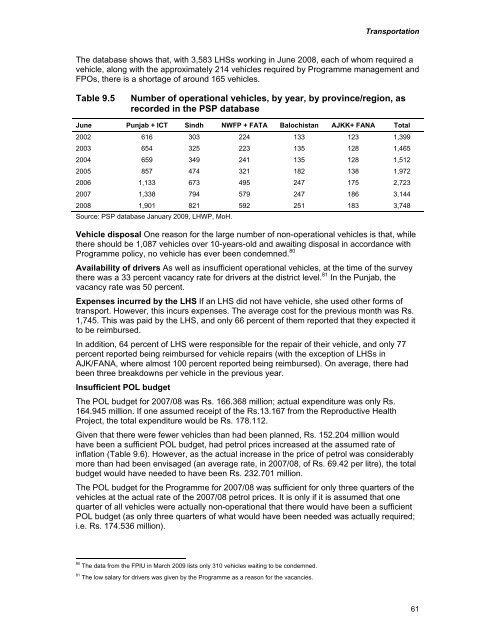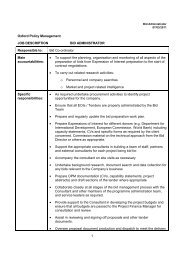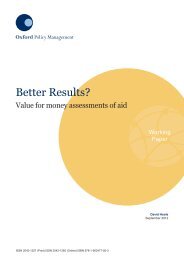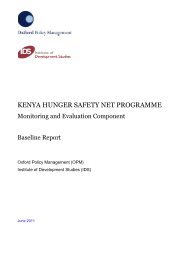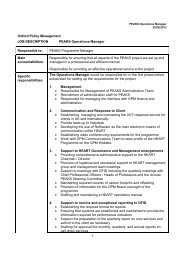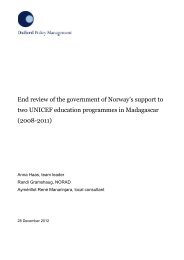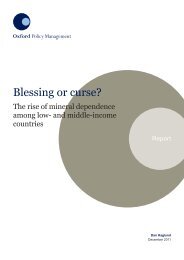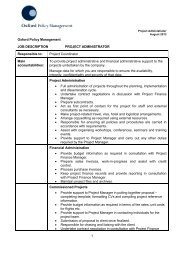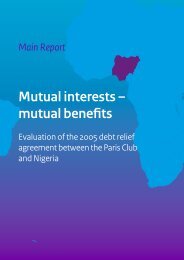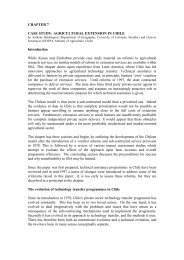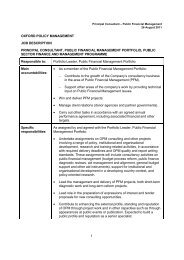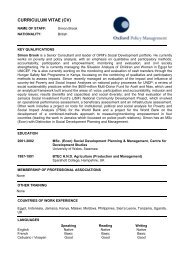LHW Systems Review - Oxford Policy Management
LHW Systems Review - Oxford Policy Management
LHW Systems Review - Oxford Policy Management
Create successful ePaper yourself
Turn your PDF publications into a flip-book with our unique Google optimized e-Paper software.
TransportationThe database shows that, with 3,583 LHSs working in June 2008, each of whom required avehicle, along with the approximately 214 vehicles required by Programme management andFPOs, there is a shortage of around 165 vehicles.Table 9.5Number of operational vehicles, by year, by province/region, asrecorded in the PSP databaseJune Punjab + ICT Sindh NWFP + FATA Balochistan AJKK+ FANA Total2002 616 303 224 133 123 1,3992003 654 325 223 135 128 1,4652004 659 349 241 135 128 1,5122005 857 474 321 182 138 1,9722006 1,133 673 495 247 175 2,7232007 1,338 794 579 247 186 3,1442008 1,901 821 592 251 183 3,748Source: PSP database January 2009, <strong>LHW</strong>P, MoH.Vehicle disposal One reason for the large number of non-operational vehicles is that, whilethere should be 1,087 vehicles over 10-years-old and awaiting disposal in accordance withProgramme policy, no vehicle has ever been condemned. 80Availability of drivers As well as insufficient operational vehicles, at the time of the surveythere was a 33 percent vacancy rate for drivers at the district level. 81 In the Punjab, thevacancy rate was 50 percent.Expenses incurred by the LHS If an LHS did not have vehicle, she used other forms oftransport. However, this incurs expenses. The average cost for the previous month was Rs.1,745. This was paid by the LHS, and only 66 percent of them reported that they expected itto be reimbursed.In addition, 64 percent of LHS were responsible for the repair of their vehicle, and only 77percent reported being reimbursed for vehicle repairs (with the exception of LHSs inAJK/FANA, where almost 100 percent reported being reimbursed). On average, there hadbeen three breakdowns per vehicle in the previous year.Insufficient POL budgetThe POL budget for 2007/08 was Rs. 166.368 million; actual expenditure was only Rs.164.945 million. If one assumed receipt of the Rs.13.167 from the Reproductive HealthProject, the total expenditure would be Rs. 178.112.Given that there were fewer vehicles than had been planned, Rs. 152.204 million wouldhave been a sufficient POL budget, had petrol prices increased at the assumed rate ofinflation (Table 9.6). However, as the actual increase in the price of petrol was considerablymore than had been envisaged (an average rate, in 2007/08, of Rs. 69.42 per litre), the totalbudget would have needed to have been Rs. 232.701 million.The POL budget for the Programme for 2007/08 was sufficient for only three quarters of thevehicles at the actual rate of the 2007/08 petrol prices. It is only if it is assumed that onequarter of all vehicles were actually non-operational that there would have been a sufficientPOL budget (as only three quarters of what would have been needed was actually required;i.e. Rs. 174.536 million).80The data from the FPIU in March 2009 lists only 310 vehicles waiting to be condemned.81The low salary for drivers was given by the Programme as a reason for the vacancies.61


